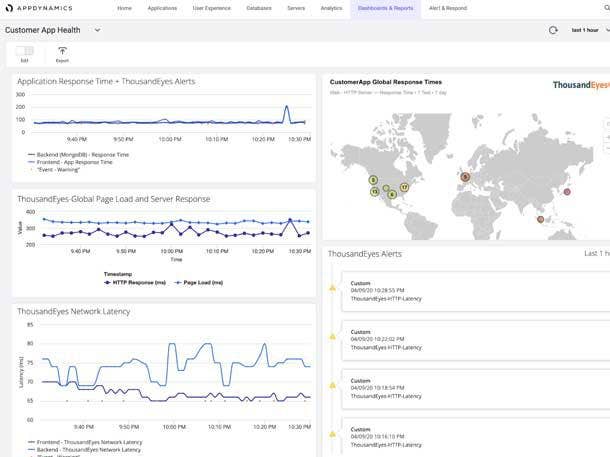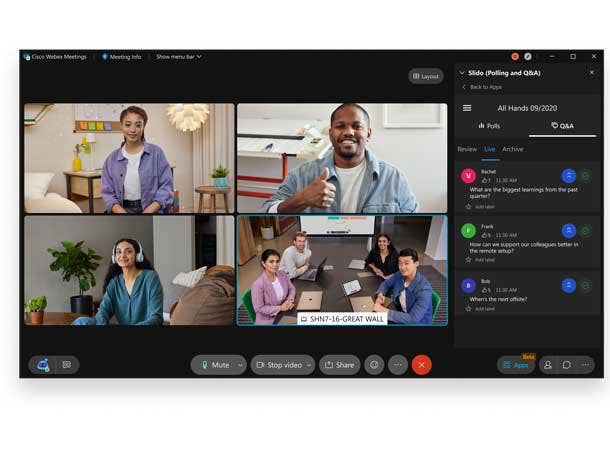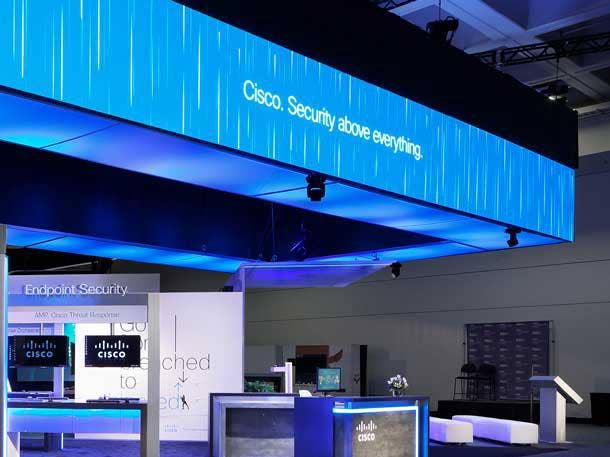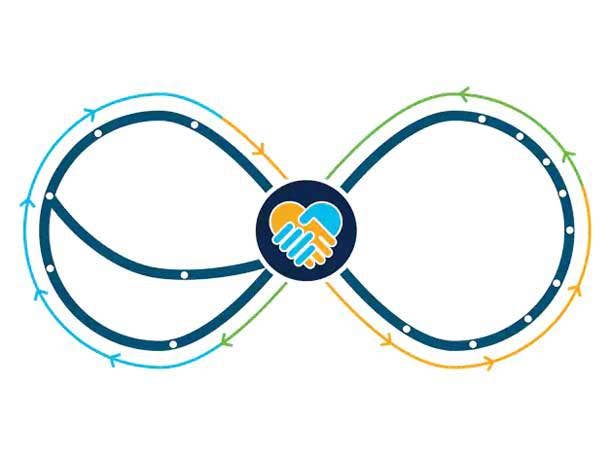Jeetu Patel on Cisco Security Next Steps And Why Hybrid Work ‘Doesn’t Work’ Right Now
‘Hybrid work doesn’t work today well, and most companies are struggling with it. We believe we’ve got some amazing solutions to make hybrid work infinitely better,’ one of Cisco’s top executives Jeetu Patel tells CRN.

Tying It All Together
Hybrid work, a trend that isn’t going away anytime soon, involves employees working from the office, at their homes, or somewhere in between. And it involves a lot of different kinds of technology stitched together to make it work. Needless to say, hybrid work is a challenge at best and just plain not working for most companies today at worst.
That’s according to Jeetu Patel, Cisco’s executive vice president and general manager of security and collaboration. He’s tasked with caring for two huge pieces of the hybrid work equation: Cisco’s large security portfolio and the tech giant’s collaboration business, which is led by the flagship Webex platform.
Cisco believes it has the products to make hybrid work, work. But that doesn’t mean there’s not still work to be done. The company has historically had a significant portfolio of strong point security solutions, but hasn’t had an integrated security platform until now with its newly revealed Security Cloud platform. The Webex platform is a continual work in progress with more than 1,000 new features added in the past two years and Cisco has even introduced new selling motions around Webex to support the way customers want to buy and partners want to sell. In order for hybrid work to be successful, networking, security, and collaboration have to come together into one cohesive solution.
Patel recently sat down with CRN to talk hybrid work and why it’s not working today for most, Cisco’s evolving security strategy and the steps the company is taking to prioritize the unification of its portfolio, and how partners will be critical in making the workforce a more collaborative and inclusive experience for all.
Here’s what Patel had to say.

How are Cisco’s separate portfolios — including security and collaboration — coming together to support hybrid work?
This is the big area that we think that’s going to be massively transformative. Hybrid work is the use case, and we need to make sure that that use case gets solved end to end. That means if you’re working at home and you happen to be on a Wi-Fi connection through your [internet service provider] ISP and that cable provider goes down, you can immediately have your router switch to a cellular network so that you have the same resiliency at home as you did in the office. You have the same level of visibility of connectivity because ThousandEyes is at home now and you can see what level of reliability you have. You have security that’s completely tied in into Webex. We’ve launched a SASE solution that ties our networking and security stack together as well. And then lastly, on the collaboration side, our hardware and software are better integrated and we’re also integrating with third-party [products]. So, when you start thinking about the level of integration investment that we’re making across our collaboration stack with Webex Calling, Messaging, Meetings, polling Q&A’s, events, whiteboarding [and] asynchronous video across all of our architectures, like networking, security and collaboration, and then also across our ecosystem of providers that customers might have invested in, whether it be partners of ours, or even competitors — we will work closely with them. That in my mind is truly transformative. And no one no one can do that level of breath that we’ve seen the market.
I feel like the reason this is so important is hybrid work doesn’t work today well, and why most companies are struggling with it. We believe we’ve got some amazing solutions to make hybrid work infinitely better than what it is. And the reason we think it’s important is if you don’t hybrid work, I think you will take a step back from the progress we’ve made in the past couple of years. Because for all the bad things that happened with COVID, the one silver lining of it was we were able to go out and make sure that people can access opportunity from anywhere in the world and not feel left out just because of geography. That in my mind is so important. If we continue to have hybrid work where you have the flexibility of when people want to be together, they can still work well, but people that are apart — that shouldn’t actually be an inhibitor. That in my mind is important for the success of humanity and for creating equal opportunity for everyone. So, we have to make hybrid work, work. And in order to make hybrid work, work, you have to make sure that the networking, security, collaboration and visibility all come together as a fluid, holistic solution.

What is the next step for partners in the hybrid work opportunity?
We have to make sure that we’re engaging with every customer on their journey for hybrid work. There is no single customer right now that’s not, in some way or form, contemplating what the future for them is going to look like. Each one of them are going to have a different set of policies based on what makes sense for their business, their culture [and] their environment. But our partner ecosystem can engage in the dialogue with the customer — regardless of which way they’re going to go — and share best practices of what we’ve learned, the technology that we have, and the cultural changes that could be made and the facilities and space planning that could be done. So, that across networking, security, collaboration and visibility — we can bring together this holistic solution and I think, progress the world forward. And right now, it’s very early days. Hybrid doesn’t work for most companies. We want to make sure we change that.

Why is Cisco now prioritizing the unification of its security portfolio?
What we have not done a great job of was in the past, we did not integrate our portfolio, five years ago, the way we should have. I think the market is now very clearly expressing an appetite, desire and a preference to buy an integrated platform rather than point solutions. We need to make sure that we, across the NetOps and SecOps personas, across the endpoint and the network, across applications and devices, are providing fluid, seamless experiences.
Security is a game of data. Here’s the reason why it’s so strategic. If you just keep buying point solutions, the correlation is very weak. But if you buy from a single platform, you can correlate the breaches that are happening and say: “Hey, I’m seeing a pattern in your endpoint and I’m seeing a pattern on the network and these, in fact, are tied to the same thing. Therefore, we think that this breach is likely to occur and here’s what you need to do to prevent that from happening.” That ability to correlate is far stronger when you have an innovative platform. So, in order to have greater efficacy and security, you have to be better integrated. That’s why we think it’s so strategic to do it and we are doing it big. We have a unified policy engine, firewall Management Center [and] we have the ability for us to say: “When the web goes dark and there’s end to end encryption everywhere, I might not be able to look inside of each packet for deep packet inspection, but what I can do is with machine learning, I can infer how the packets are moving is and whether or not that’s anomalous. And also tie that to the data from my device posture on my endpoint and see if those two things can tell me something more than what I would have found otherwise. So, as the landscape is evolving, so will the technology. And then you have to make sure that when you’re thinking about this, you’re keeping security in mind, but also privacy. [Features like] Wi-Fi fingerprinting is so transformational because it can detect your location change without disclosing your location. All we need is the fact that the location changed and as a result, we need to make sure that we apply a certain set of controls. We don’t have to disclose your location which might violate your privacy.

What’s the next step in cybersecurity for partners?
The way I see it, partners will play a very strategic role in every aspect of our security, whether it be network security, secure connectivity, zero-trust, or even tying in with our Threat Intelligence Team. And then making sure that all the horizontal services we have — the policy engine, open API and the unified edge — all of those pieces are being well understood by the partner ecosystem, because what we will need is a reeducation in the market of all the pieces that the Security Cloud [platform] brings. We’re going to rely a lot on our partners to build great technology, but then enable them so that they can take it to our customers because the world is a safer place when Cisco is able to deliver an integrated platform to the market. We want to make sure that we do that because there’s a tremendous amount of trust that customers have with the Cisco brand and networking and security are so intrinsically tie together. You can’t be in the connectivity business and not be in the protection business. I just don’t think that works.

In tying together all the pieces of hybrid work, how much is Cisco going to be leaning on its partners?
The partners are the lifeblood of our company. People might say: “Why is that?” We have always relied on partners to make sure that they can take our technology to the customers and do that last bit so that the customer is able to use it. In the cases of the hardware businesses, we’re very reliant on partners to make sure that all those pieces get to the customer and are being installed. In case of software businesses, especially in SaaS, we really want to rely on our partners for things like adoption and strategic change management and all of those aspects as well. I think it’s going to be tremendously useful to continue to keep obsessing on partners like we have for the past the past few decades. Our commitment to partners is only increasing every single day and we feel like without partners, we won’t be able to make the level of difference to our customers as we can with partners. We’re probably one of the few companies in the world that’s so lucky to have such a loyal partner ecosystem.
All of us will have to make sure that we are teaming up to progress the ball forward [and] how we should behave so that no one feels left out. In today’s day and age, leaders have to master being able to engage in a world where not everyone is in the same physical location. The way I think about this is when you look at Presidents of the United States — each one of them at different eras had to master the medium of communication that was the dominant medium at the time, and then add to it. For example, radio was the dominant medium of communication and the presidents that ran during that time had to go out and figure out how to go master radio. But then when television came about, they still had to be good at radio, but they also had to be good to television. I think hybrid work is going to be in a similar vein. You have to be great when everyone’s in the room, you have to be great when everyone’s remote, and you’re going have to be great in mix mode. If you don’t do that, then you will not have the full potential of your leadership realized. Culturally, the skills that you have to build as a leader are going to be very important so that people feel included, people feel like they have a seat at the table, people don’t feel left out, and people don’t feel like: “If I’m an introvert, I’m actually at a disadvantage. I might not have the space and the safety to be called upon so that I can also provide my ideas.” I think that’s really important, and partners will play a role with that because as they start coaching our customers, they will be able to take some of those ideas to them as well.